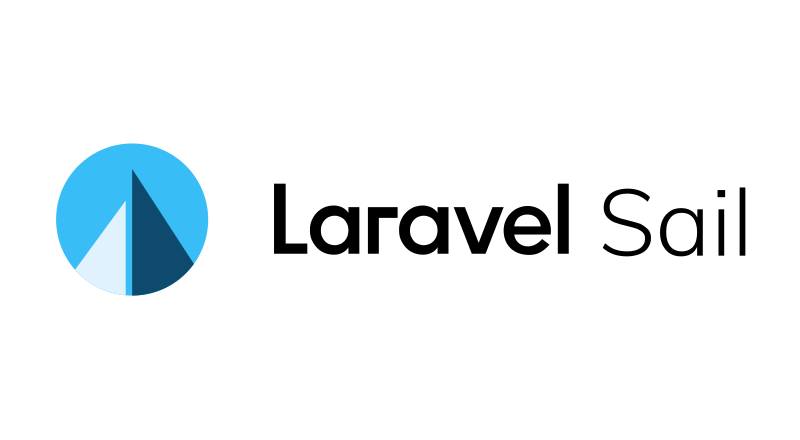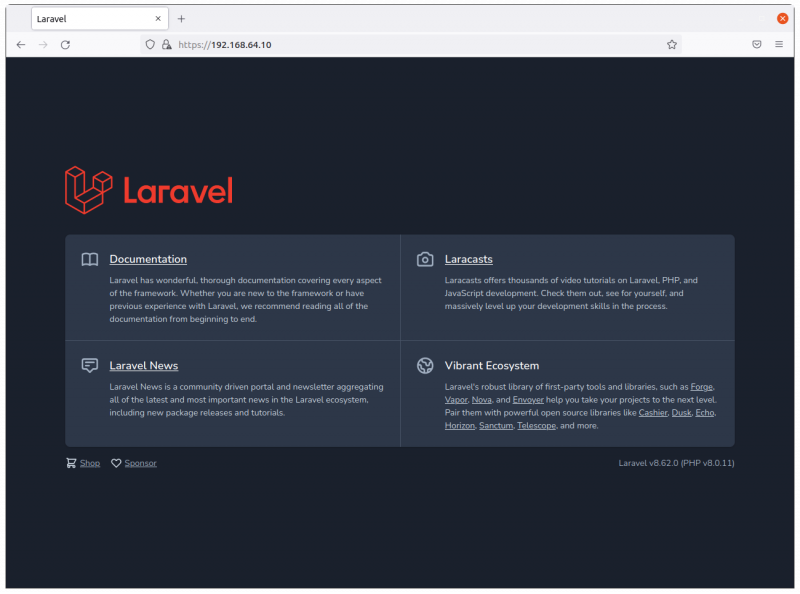2022-05-12
[Laravel Sail] Enable SSL (HTTPS) with Nginx

🎉 A Laravel Sail plugin to enable HTTPS connection: Sail-SSL is now available!
I released a plugin to enable HTTPS connection in Laravel Sail environment.
You can access the application with SSL by only a few commands.
Link: https://github.com/ryoluo/sail-ssl
How to use
With local PHP / Composer:
composer require ryoluo/sail-ssl --dev
php artisan sail-ssl:install
./vendor/bin/sail up
With Sail container:
./vendor/bin/sail up -d
./vendor/bin/sail composer require ryoluo/sail-ssl --dev
./vendor/bin/sail artisan sail-ssl:install
./vendor/bin/sail down
./vendor/bin/sail up
After containers started, you can access https://localhost.
For more information, please visit GitHub Repository and check README.
Old contents are below.
We are going to do...
- Add a Nginx container to Docker Compose.
- Configure Nginx as reverse proxy and forward HTTP request to Laravel built-in server.
- Attach fixed IP address on Nginx.
You can see sample code at https://github.com/ryoluo/laravel-sail-ssl.
Setting environment variables
Add following environment variables in advance.
APP_PORT , APP_SSL_PORT, FORWARD_DB_PORT
- Change listening ports to avoid conflicting with local web server and DB server.
APP_ADDRESS, NW_SUBNET
- Set variables to fix Nginx IP address.
.env
APP_PORT=50080
APP_SSL_PORT=50443
FORWARD_DB_PORT=53306
APP_ADDRESS=192.168.64.10
NW_SUBNET=192.168.64.0/18
Add a Nginx container to Docker Compose
Add a Nginx container as web. Set existing network sail and attach APP_ADDRESS as fixed IP address.
For network sail, attach NW_SUBNET for subnet at ipam block.
Now Nginx container will be hosted with fixed IP address.
docker-compose.yml
version: '3'
services:
# Add a Nginx container
web:
image: nginx:latest
volumes:
- ./nginx/templates:/etc/nginx/templates
- ./nginx/certs/:/etc/nginx/certs
ports:
- '${APP_SSL_PORT:-443}:443'
networks:
sail:
# Fixed IP address
ipv4_address: ${APP_ADDRESS}
depends_on:
- laravel.test
laravel.test:
# omitted below
networks:
sail:
driver: bridge
# Assign subnet
ipam:
driver: default
config:
- subnet: ${NW_SUBNET}
volumes:
# omitted below
Generate server certificates
Create directories: ./nginx/certs and ./nginx/templates.
Generate self-signed certificates and put them on ./nginx/certs.
bash
mkdir -p {./nginx/certs,./nginx/templates}
openssl req -x509 -nodes -newkey rsa:2048 -days 3650 \
-keyout ./nginx/certs/server.key \
-out ./nginx/certs/server.crt
Create Nginx configuration file
Create Nginx configulation file default.conf.tameplate in ./nginx/templates directory. This file will be deployed as /etc/nginx/conf.d/default.conf in Nginx container.
Reference: https://hub.docker.com/_/nginx
/etc/nginx/templates/default.conf.template will be output with the filename /etc/nginx/conf.d/default.conf.
./nginx/templates/default.conf.template
server {
listen 80 default_server;
return 301 https://$host$request_uri;
}
server {
listen 443 ssl default_server;
ssl_certificate /etc/nginx/certs/server.crt;
ssl_certificate_key /etc/nginx/certs/server.key;
location / {
proxy_pass http://laravel-sail-ssl_laravel.test_1;
}
}
Redirect requests from port 80 (HTTP) to 443 (HTTPS) and forward requests to Laravel built-in server on 443 port.
Note: Please replace proxy URL as your environment. This may depends directory name of the application.
Start up containers
bash
./vendor/bin/sail up
Once containers are running, you can access to the Laravel application with SSL (HTTPS) from URLs below.

That's it. Happy coding with Laravel Sail!